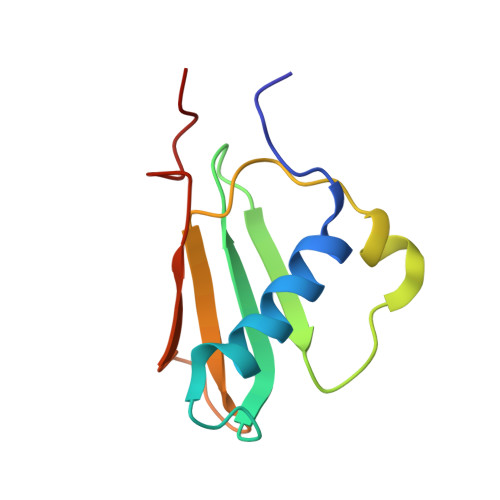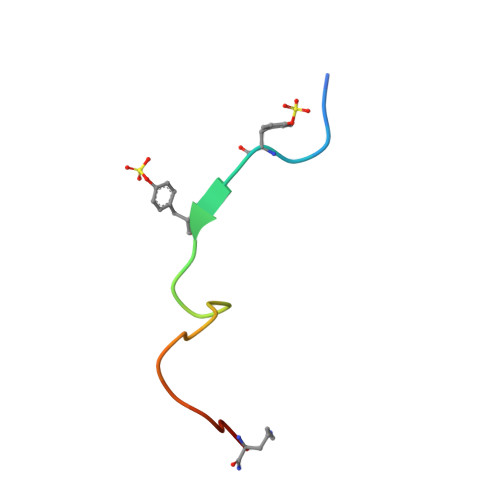Structure of the Tyrosine-sulfated C5a Receptor N Terminus in Complex with Chemotaxis Inhibitory Protein of Staphylococcus aureus.
Ippel, J.H., de Haas, C.J., Bunschoten, A., van Strijp, J.A., Kruijtzer, J.A., Liskamp, R.M., Kemmink, J.(2009) J Biol Chem 284: 12363-12372
- PubMed: 19251703
- DOI: https://doi.org/10.1074/jbc.M808179200
- Primary Citation of Related Structures:
2K3U - PubMed Abstract:
Complement component C5a is a potent pro-inflammatory agent inducing chemotaxis of leukocytes toward sites of infection and injury. C5a mediates its effects via its G protein-coupled C5a receptor (C5aR). Although under normal conditions highly beneficial, excessive levels of C5a can be deleterious to the host and have been related to numerous inflammatory diseases. A natural inhibitor of the C5aR is chemotaxis inhibitory protein of Staphylococcus aureus (CHIPS). CHIPS is a 121-residue protein excreted by S. aureus. It binds the N terminus of the C5aR (residues 1-35) with nanomolar affinity and thereby potently inhibits C5a-mediated responses in human leukocytes. Therefore, CHIPS provides a starting point for the development of new anti-inflammatory agents. Two O-sulfated tyrosine residues located at positions 11 and 14 within the C5aR N terminus play a critical role in recognition of C5a, but their role in CHIPS binding has not been established so far. By isothermal titration calorimetry, using synthetic Tyr-11- and Tyr-14-sulfated and non-sulfated C5aR N-terminal peptides, we demonstrate that the sulfate groups are essential for tight binding between the C5aR and CHIPS. In addition, the NMR structure of the complex of CHIPS and a sulfated C5aR N-terminal peptide reveals the precise binding motif as well as the distinct roles of sulfated tyrosine residues sY11 and sY14. These results provide a molecular framework for the design of novel CHIPS-based C5aR inhibitors.
Organizational Affiliation:
Department of Medicinal Chemistry and Chemical Biology, Utrecht University, Sorbonnelaan 16, 3584 CA Utrecht, The Netherlands.
















